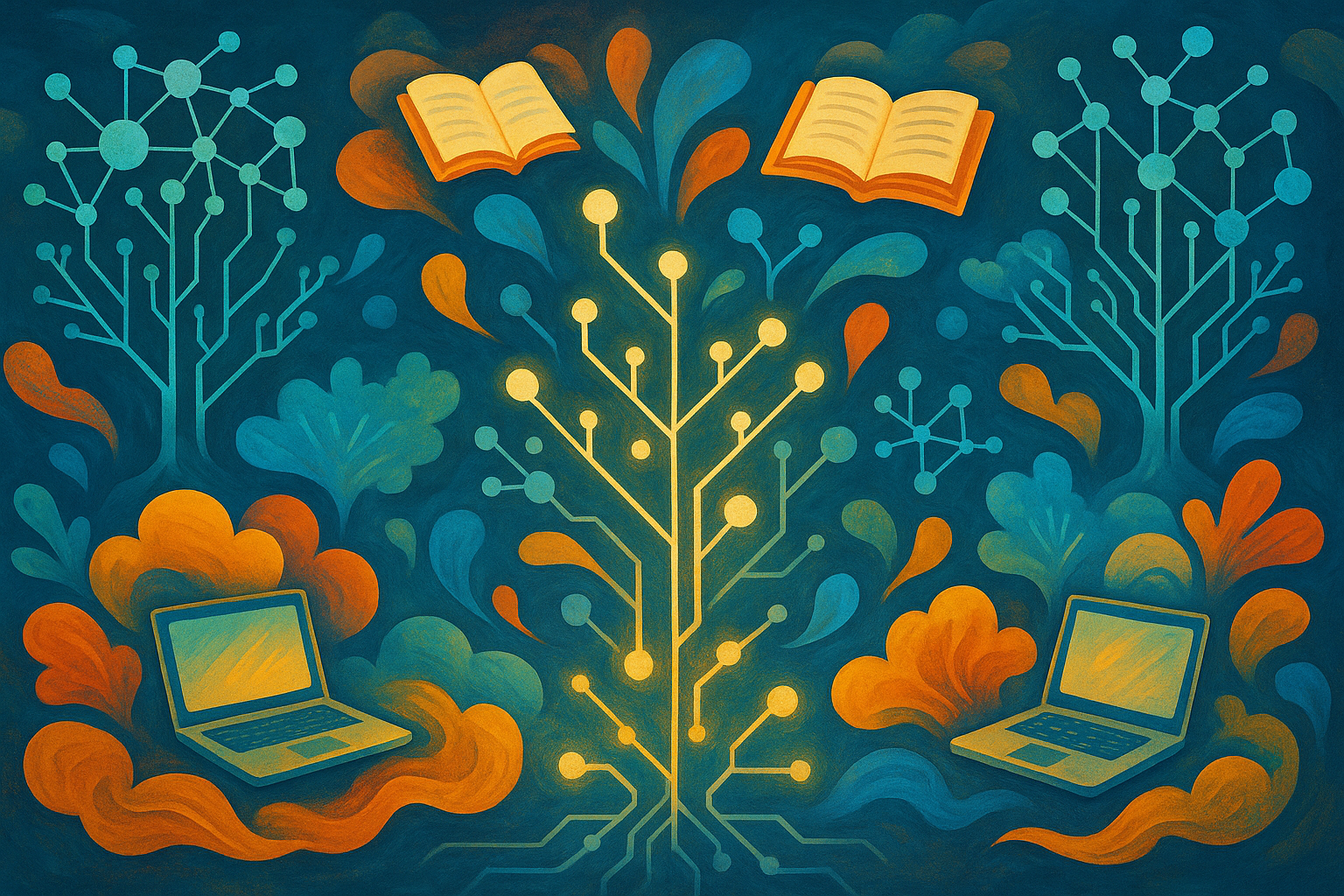Pedagogy of the Connected:
Building Community in Online Learning Spaces

In the contemporary landscape of online education, the challenge of building genuine, meaningful community is both urgent and complex. As Paulo Freire (1970) argued, education is never neutral - it either functions to bring about conformity or to enable liberation. The Learning Management System (LMS), often the institutional core of digital education, has the potential to reinforce hierarchical and transactional models of teaching. But from a critical pedagogy perspective, it also offers possibilities for connection, dialogue, and transformation. This post explores how educators can foster community in virtual classrooms by reimagining the LMS and integrating informal, student-centred strategies.
Reimagining the LMS as a Community Platform
From a critical pedagogy lens, we must understand the LMS as a technology embedded with institutional values and assumptions. By default, many platforms promote passive consumption: students complete checklists, upload assignments, and participate in structured discussion boards. To subvert this, educators can use the LMS to enable dialogue, collaboration, and reflection.
One strategy is to reconfigure discussion boards into asynchronous student-led seminars. Rather than the common “post once, reply twice” model, students can rotate as weekly facilitators, guiding conversations and summarising insights. Another approach involves using collaborative annotation tools like Hypothes.is. Embedding annotations directly into reading materials allows students to comment, question, and converse in the margins - making reading a communal, rather than solitary, experience (Kalir and Garcia, 2019).
Inviting Student Voice and Co-Ownership
Freire (1970) reminds us that dialogue cannot exist without humility. When educators assume the role of co-learners rather than content dispensers, students become co-creators of knowledge. This can begin with simple tactics, such as collecting anonymous feedback midway through a module and adapting the course in response.
Co-ownership can also take form through collaborative tools like Padlet or shared Google Docs. In one example, students contributed discussion prompts for live sessions, creating a sense of investment and relevance. Such practices not only democratise the classroom but affirm students’ lived experiences as valid epistemological resources (hooks, 1994).
Connecting Beyond the LMS: Layering Informal Spaces
Formal learning environments rarely accommodate the emotional and relational dimensions of education. To build community, educators can support the development of informal spaces for connection - spaces often initiated by students themselves.
For example, some student cohorts have created Discord servers to share notes, vent frustrations, and celebrate achievements. These informal networks often outlast the course itself and evolve into support systems. Educators can suggest, though not mandate, such spaces, maintaining boundaries while legitimising their value (Costa, 2013).
Collaborative note-taking through shared documents is another tactic. It fosters accountability and shared understanding, and highlights the social nature of learning. These practices echo Vygotsky’s (1978) emphasis on social interaction as the foundation of cognitive development.
Humanising the Educator
Critical pedagogy challenges the notion of the distant, objective academic. Instead, it invites vulnerability, presence, and relationality (bell hooks, 1994). Educators can humanise themselves through short weekly audio or video reflections that go beyond content summaries. These moments of presence - “Here is what I’m thinking this week…” - make the teacher visible, fallible, and human.
Students often respond with appreciation to such gestures. In one case, a lecturer’s brief weekly audio posts became a springboard for spontaneous student responses and dialogue. These actions reframe the teacher not as a gatekeeper, but as a fellow learner and participant in community.
Building Rhythms and Rituals
Community thrives on rhythm. Predictable structures create psychological safety and a sense of belonging. Weekly check-ins in the LMS - whether mood polls, reflective prompts, or informal announcements - anchor the learning journey.
One example is a simple Monday “Mood Meter” poll in the announcements area, asking “How are you arriving this week?” Over time, such rituals become communal touchpoints, reinforcing that emotional presence matters. Celebrating milestones, even with lightweight gestures, reinforces solidarity.
Assessment as Relationship
Assessment is often treated as individualistic and high-stakes. But critical pedagogy reframes it as relational and dialogic (Brown and Duguid, 1991). Peer feedback, co-authored artefacts, and collaborative projects are not merely alternative methods - they are expressions of community.
An example might involve students working in pairs or small groups to curate digital artefacts on key themes, publishing them in a shared online space. These assessments encourage negotiation, reflection, and collective meaning-making, and mirror real-world collaborative practices.
Conclusion
Community is not a side-effect of good teaching - it is the essence of it. In online education, community must be consciously designed, not passively expected. The LMS can be a site of liberation, not just surveillance, if we reappropriate it for care, dialogue, and human connection.
To teach against the interface is to teach for solidarity. And in doing so, we reclaim our roles - not just as content deliverers, but as co-creators of spaces where education becomes truly transformative.
References
- Brown, J.S. and Duguid, P. (1991). Organizational Learning and Communities-of-Practice: Toward a Unified View of Working, Learning, and Innovation. Organization science (Providence, R.I.), 2(1), pp.40–57.
- Costa, C. (2013) ’The habitus of digital scholars’, Research in Learning Technology, 21. https://doi.org/10.3402/rlt.v21i0.21274.
- Freire, P. (1970) Pedagogy of the Oppressed. New York: Continuum.
- hooks, b. (1994) Teaching to Transgress: Education as the Practice of Freedom. New York: Routledge.
- Kalir, J.H. and Garcia, A. (2019) ’Annotation’, MIT Press Essential Knowledge Series. Cambridge, MA: MIT Press.
- Vygotsky, L.S. (1978) Mind in Society: The Development of Higher Psychological Processes. Cambridge, MA: Harvard University Press.